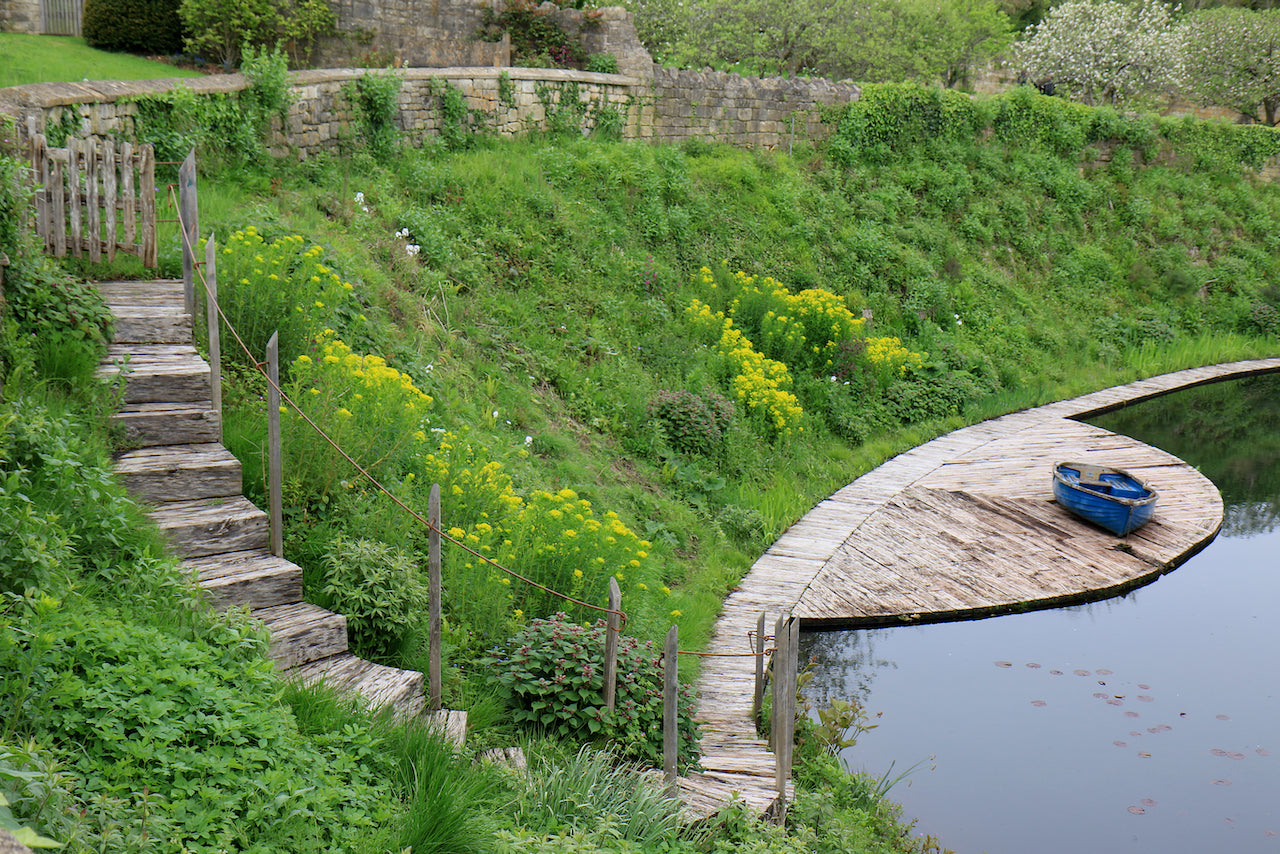Caisson Gardens

Is it too early to be thinking about garden visits for next year? Well I don’t think so and if there was one garden that I would say should be at the top of your ‘must see’ list it would be Caisson Gardens, near Bath. It only opens on selected days (these will be released later this autumn), so do check the website at the bottom of this piece.
It is an extraordinary garden, that has been lovingly restored by Amanda and Phil Honey over the past fourteen years. You might be wondering what is it that makes it so ‘extraordinary’? Back in the 1800’s this area of north Somerset was very prosperous due to the mining of coal and the landscape still retains some remnants of this industrial past. Caisson was the head office for the Somerset Coal Canal Company and the redundant canal still winds its way through the gardens, featuring no fewer than fifteen locks! Now dry, the locks have become a habitat for plants and wildlife. Water still exists in the form of two ponds, along with a stunningly designed rill that interweaves it way from the house down the garden.
Formal areas surround the house and these are contrasted by wilder parts that wrap the perimeter of the gardens. The wild flower meadows are a sheer delight in summer, simply buzzing with insects. This is truly special garden that respects the landscape and at the same time features a breathtakingly beautiful design and romantic planting.
Annie Guilfoyle







